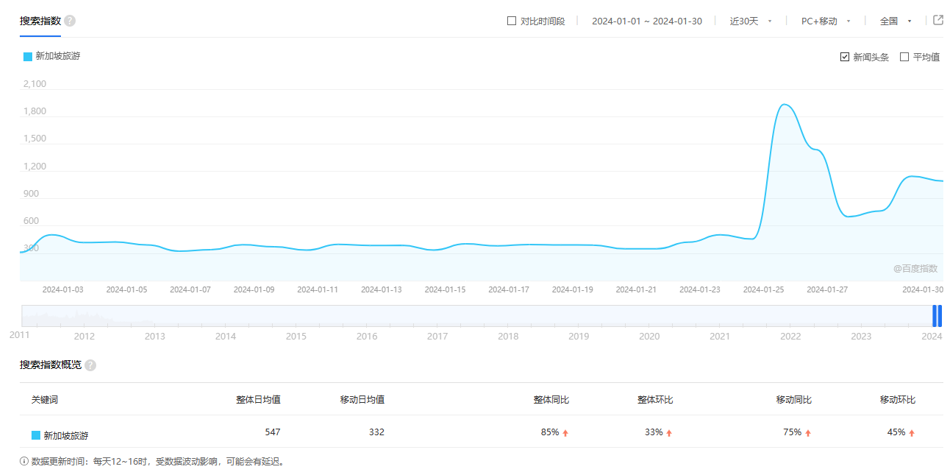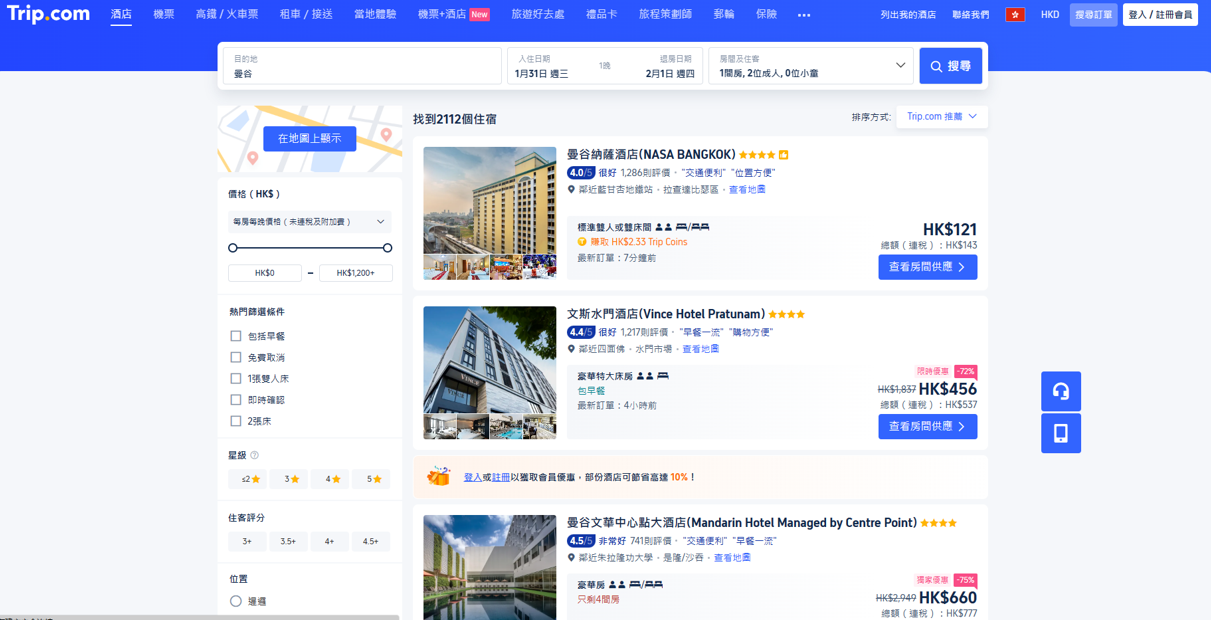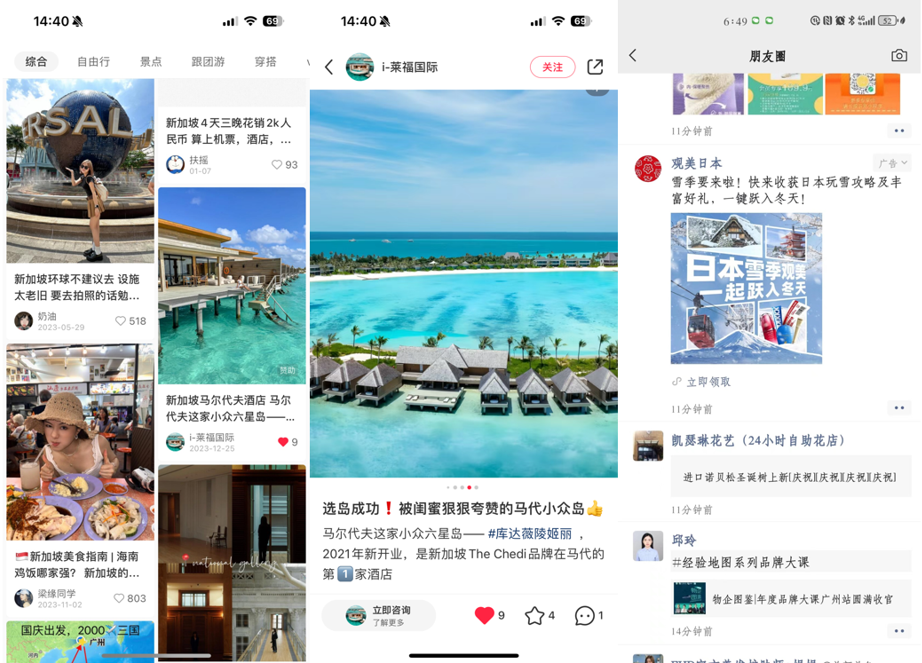According to the latest news released by the Chinese Ministry of Foreign Affairs, China has concluded visa exemption agreements with 157 countries covering different passports, and reached simplified visa procedures agreements or arrangements with 44 countries, and achieved full visa exemption with 23 countries including Thailand, Singapore, Maldives, and the UAE. Chinese citizens can travel to these countries without a visa or with a visa on arrival. This is a major benefit for the development of the tourism industry, providing Chinese tourists with more travel options and convenience, and also bringing huge business opportunities and potential for the tourism industry of these countries. At the same time, the China Tourism Research Institute predicts that the number of inbound and outbound tourists in China will exceed 264 million in 2024.

Visa-Free Policies for Singapore, Thailand Spike Travel Orders by 6x
After the announcement of Singapore's visa-free policy, the "Singapore Tourism" related keywords in Baidu Index increased by 85% year-on-year. Singapore is a popular destination for Chinese outbound tourism, and also an important source of inbound tourism. Data shows that in the first half of 2023, Singapore received more than 420,000 Chinese tourists, a year-on-year increase of 1122%; among the popular outbound destinations for Chinese tourists, Singapore's popularity ranked firmly in the top five.

Analysis of Baidu index data for Singapore tourism keywords
After the announcement of Thailand's visa-free policy, the search heat of Thailand-related keywords on Ctrip platform increased by more than 7 times compared with the previous day, among which, the year-on-year growth of air tickets and hotels exceeded 6 times. Residents of Shanghai, Beijing, Guangdong, Zhejiang, Jiangsu, Sichuan, Shandong and other provinces searched for Thailand more. The most searched destinations for Chinese tourists in Thailand are Bangkok, Phuket, Chiang Mai, Koh Samui, Pattaya.

Ctrip's overseas website interface
From the above data, it can be seen that the announcement of visa-free policies for popular tourist destinations such as Singapore and Thailand has greatly stimulated the outbound tourism demand of Chinese tourists, and also brought new opportunities and challenges for the overseas tourism industry. Overseas tourism brands also have to face competitors from home and abroad. How to make your brand stand out in this highly competitive market and attract more target customers? Next, we will share with you the following media strategies to help your brand break through.
Strategies for Brands as 264 Million Chinese Tourists Go Abroad
How to effectively attract and retain Chinese tourists on Chinese digital media is a key issue that the overseas tourism industry needs to think about and implement. Here are some possible strategic suggestions:
1) Search engines are an important channel for Chinese tourism consumers to obtain information and make decisions. According to Global Travel News, Chinese tourism consumers will use search engines to query the basic information, travel guides, visa policies, air ticket and hotel prices of the destination, as well as refer to the evaluations and experiences of other users in the preparation stage before traveling. Therefore, global tourism brands should be aware of the value of the two most common digital marketing strategies: search engine marketing (SEM) and search engine optimization (SEO), for acquiring accurate traffics and conversion potential.


Intercontinental Hotel placing SEM ad on So.com
In the advertising delivery of Chinese search engines, the bidding ad of So.com (the search engine service powered by Qihoo 360) is a product worth paying attention to. Using the massive users and traffic of So.com, as well as the powerful search technology and algorithm, it provides an efficient delivery channel for brands. According to statistics, in the first half of 2023, the search volume of So.com in the tourism category reached 540 million times, a year-on-year increase of 25.3%. These data show that placing search ad in So.com shall bring a large market potential and competitive advantage in the tourism industry.
2) Social media platforms are the fastest and most direct channel to reach Chinese tourists. Tourists are often influenced by the content on social media, or do their homework on the platform before deciding to travel, and then return to the platform to share their travel experiences after the trip, forming a spontaneous "traffic closed loop", further reaching more audiences. Overseas tourism brands can establish official accounts on platforms such as WeChat, Weibo, Douyin, etc., and post content related to the destination's culture, scenery, food, activities, etc., to attract and retain the attention of Chinese tourists.

Travel related ad in top Chinese social media
Taking Xiaohongshu as an example, Xiaohongshu's travel notes increased by 273% year-on-year in 2023, and users recorded and shared their travel experiences and information on Xiaohongshu, using routes, guides, etc. to build rich travel stories, flowing into a new way and trend of travel that everyone can enjoy.
We hope that through this article, we can help your overseas tourism brand gain more attention and recognition in the Chinese market, better understand the opportunities and challenges of the Chinese tourism market, and how to choose the appropriate digital media platform and channel, to enhance your overseas tourism brand's visibility and influence. If you are interested in the media delivery we introduced, you are welcome to consult our professional team enquiry@so360.hk, we will provide you with more details and solutions, to make your brand stand out in the Chinese tourism market. Thank you for your reading and attention, looking forward to working with you!
© 2014-2025 QS Search Limited. All Rights Reserved.





